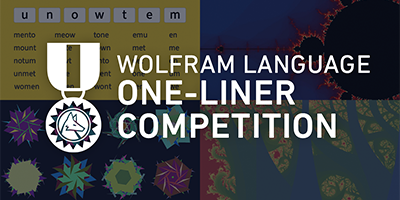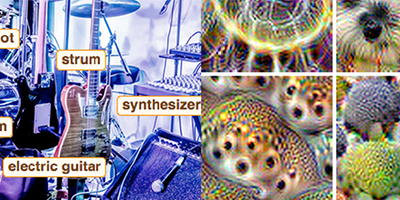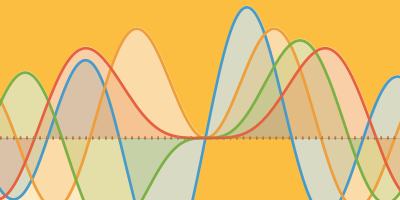Master the Basics of Laplace Transforms in Just 15 Lessons with Wolfram Language

The Laplace transform provides effective and easy means for solving many problems that arise in the fields of science and engineering. It is one of the main tools available for solving differential equations. For most of us, the first time we see it is in an introductory differential equations course.
Wolfram Language provides an ideal environment for studying this subject, thanks to its built-in computational capabilities, both symbolic and numerical, as well as its powerful visualization tools.
Today, I am excited to announce a free interactive course, Introduction to Laplace Transforms, that will help students all over the world to master this subject.
The course is a basic introduction to the subject and it has three parts: Laplace transforms, inverse Laplace transforms and applications. It is intended for science, technology, engineering and math majors; teachers and professors looking for different ways of presenting Laplace transforms to their students; and anyone who wants to learn about Laplace transforms using Wolfram Language.
Clicking on the image below, which links to the course, lets you explore its content.
Historical Background
The Laplace transform is named after French scholar Pierre-Simon Laplace, who employed a similar transform in his investigations of probability theory (1814). Many other mathematicians made significant contributions to the theory of Laplace transforms, including Leonhard Euler, Joseph-Louis Lagrange, Salvatore Pincherle, Henri Poincaré, Oliver Heaviside, Thomas Bromwich and Gustav Doetsch. They conducted research on, developed and extended the Laplace transform.
Overview
Students taking the course will receive an introduction to the Laplace transform starting from the basic definition as an integral and its elementary properties, Laplace transforms of different types of functions, numerical approximations, inverse Laplace transforms and their properties, inverse Laplace transforms of different types of functions and complex inversion and numerical approximations for the inverse transform.
A final section consisting of applications to ODEs, PDEs, fractional calculus, sums and integrals hopes to inspire students to further explore the subject.
The course framework can be viewed in the following image.

The course consists of lessons, exercises and quizzes designed to help you master all the fundamentals of this subject.
Necessary mathematical prerequisites for the course are exposure to single-variable calculus and differential equations.
Let’s see in more detail what the course looks like.
Lessons
The course is organized into 15 lessons. Each lesson consists of a video and its written transcript.
The first lesson, “What Is a Laplace Transform?”, is a historical introduction to the topic and shows the first simple calculations of Laplace transforms.

All lessons contain numerous solved examples, often illustrating the use of Wolfram Language code and functionality.
Lesson videos range from 6–20 minutes in length and are accompanied by a transcript notebook. These notebooks can either be downloaded or viewed in the browser. Students can experiment with them and try the examples in a scratch notebook directly in the browser on the same webpage as the video.
Exercises
Each lesson contains five or more exercises that review the material covered in the lesson. The solutions are provided, most of the time in the form of Wolfram Language code. Exercises are a key component of the learning experience as they enhance the material covered in each lesson.
For example, below is an exercise from Lesson 10.

Students can experiment with Wolfram Language notebooks and try variations of the exercises or adapt the code to their own explorations.
Quizzes
The 15 lessons of the course are grouped into three sections. Each section ends with a quiz with 10 multiple-choice problems reviewing the material contained in the section. The quiz is intended to help students with questions that are similar to the exercises and provide feedback on answers.

Students are encouraged to use any method to solve the quiz problems, whether by hand or using Wolfram Language. A scratch notebook is provided for that purpose on the right-hand side of the quiz webpages.
Course Review
One of the difficulties with studying a subject like Laplace transforms is that a vast number of new concepts and theorems needs to be mastered in a short period of time. To help you in reviewing the course material, the course concludes with a final review lesson titled “Laplace Transforms in a Nutshell.”

Course Certificate
Students who finish the course and pass all the quizzes can get a certificate of completion.

A final exam is also available at the end of the course. Passing it entitles the student to a Level 1 certification for proficiency in Laplace transforms. It’s easy to track which videos you’ve completed and the status of your quizzes and exam by using the “Track My Progress” section of the course. Your shareable certificates are automatically generated and immediately available to you upon completing the requirements.
A Building Block for STEM Success
A thorough understanding of Laplace transforms is highly desirable for students not only in mathematics but also in physics and engineering. This course aims to help students master the basics of Laplace transforms and to provide a solid foundation for their further studies.
Acknowledgements
I would like to thank Hrachya Khachatryan, Devendra Kapadia, Anisha Basil, Joyce Tracewell, Cassidy Hinkle, Adam Bramowicz, Bob Owens, Jay Warendorff, Tim Shedelbower, Naoko Glowicki, Jamie Peterson, Lori Goodman, Laura Millar and Mariel Laugesen for their work on various aspects of the course.
| Register for Daily Study Group: Introduction to Laplace Transforms. |




Comments